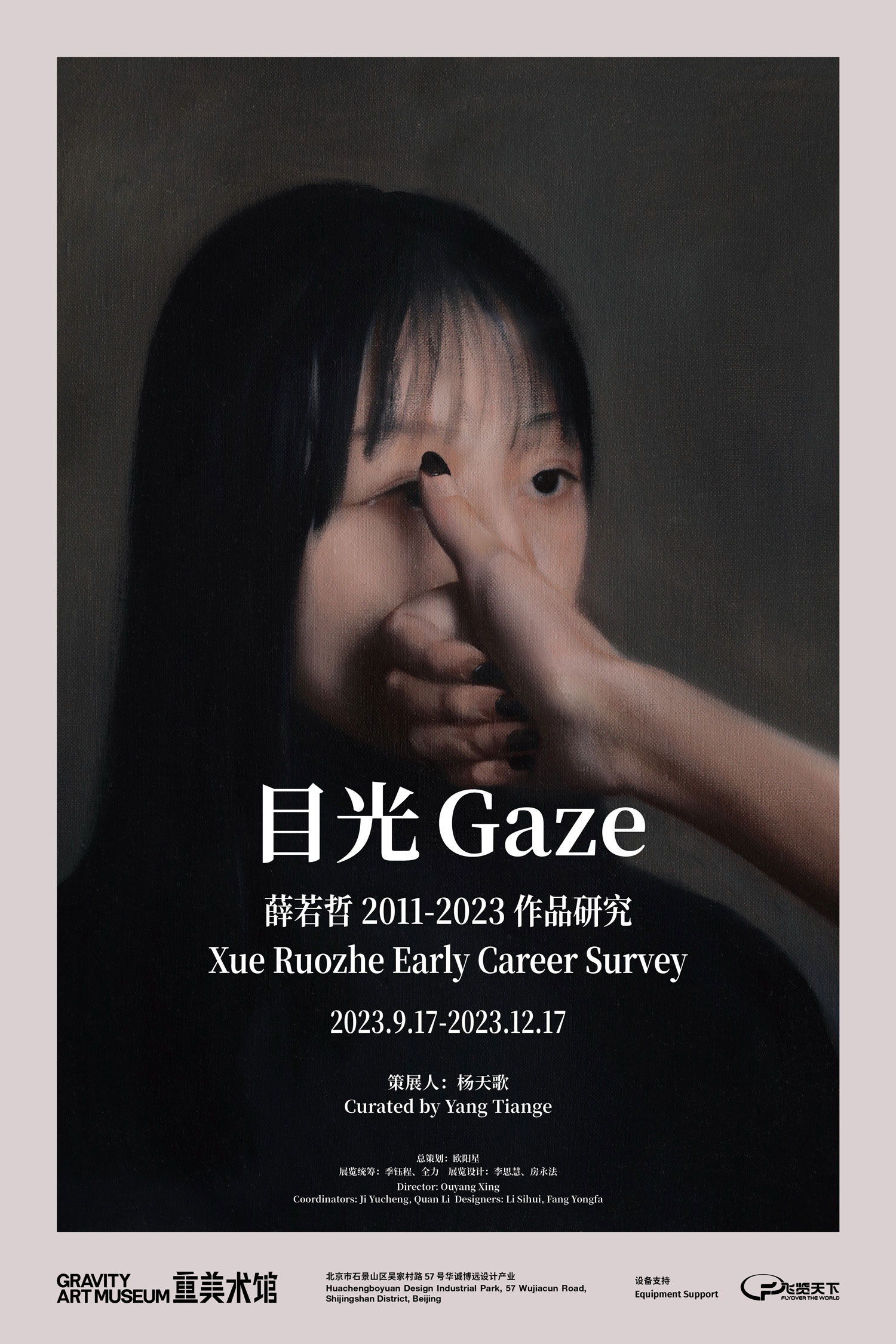Gaze: Xue Ruozhe Early Career Survey 2011-2023 is the first institutional solo exhibition of the artist Xue Ruozhe in Beijing, as well as a survey retrospective of the artist’s early career. The exhibition is not solely intended for the purpose of retrospection, but rather selectively features a portion of the artist's oeurvre, primarily paintings, also with some video works. It aims to uncover Xue Ruozhe's idiosyncraticexperiments and practices within the grand contexts of classicism and realism. The survey is thematic, and it is gaze that precisely captures the essence of Xue Ruozhe's artistic endeavors.
Xue Ruozhe is an artist dedicated to painting. He believes that painting means much more than a profession for him; it is an addiction and even a belief. In his own words, "Painting is my instinct, an internal necessity." Looking back over more than a decade of Xue Ruozhe's paintings before and after his graduation, he is mostly known for his exceptional skill in depicting the details of figures, landscapes, and still life. Beneath the surface, however, a deeper exploration reveals that the majority of his works are centered around the spiritual realm of individuals, delving into the quest of the inner world and the psychological self-examination. In other words, within the sequence of his creations, Xue Ruozhe's paintings transition from depicting external objects to delving into the inner world of the subjects, reflecting the artist's introspection, and further extending to the internal gaze of all viewers, bridging the gap from sight to spirit. This is the "visual-spiritual" cyclic logic that Xue Ruozhe achieves through his extensive body of work, representing a process of inner visual contemplation. This unique perspective constitutes a kind of viewing, a paradoxical "gaze." Taking "gaze" as the exhibition theme, Xue Ruozhe's early career survey aims to reconstruct and emphasize the visual and psychological aspects of his works, and to explore the multi-dimensional perspective of the artist's exploration of the spiritual and his approach to image perception.
In Xue Ruozhe's primarily portrait works, the intersections, deviations, and reciprocations of gazes take a prominent role, serving as the starting point for the artist's constructed visual and psychological logic. In Xue Ruozhe's paintings, direct eye contact with the viewer is seldom encountered. The subjects are immersed in their own obscure dimensions, ignoring one another in silence. Yet, their focus and concentration remain palpable, especially explicit through their stares that present a universal state. However, when we gaze upon them, reflect on ourselves and attempt to connect with them, they always avoid returning the gaze. In this interplay of divergent gazes, the figures become multi-layered and multivalent: they are both objects depicted by the painter and subjects within the painting; they are reflections of the artist himself, and simultaneously the viewers’ self-incarnation, transparent and introspective. They possess a solid existence yet also exhibit a transparent effect, thus creating boundless potential for the viewers who could reach into the enigmatic inner world of the painted, of the painter, and of themselves. "It calls us or summons us to it or toward it, leading us there; through the painting that is offered up to our look, we enter into the manner in which it is presented to the outside." Hence, Xue Ruozhe's paintings achieve visual reciprocity, exploring the inner space of the spirit.
While constructing the internal psychological world and the visual logic of introspection, Xue Ruozhe creates unique iconological puzzles in both his paintings and video works. These images encompass portraits (full-body), body parts, clothing, and hidden but ubiquitous light and shadow. Though not intricate in category, these images overlap, conflict, and occasionally generate ambiguity, transcending our habitual viewing logic, thus crafting a self-sufficient realm. Here, images must not mean but be. Engaging in dialogue and mutual observation with these images leads to a dispersed and multi-dimensional experience. Within this labyrinthine image structure, gazes from various directions never converge, yet they seem to echo one another in a whisper.
Echoing the intertwined gazes within the images in the artworks, the exhibition design similarly presents multiple perspectives and overlapping viewing fields. By showcasing Xue Ruozhe's paintings within such an exhibition space, it aims to remind viewers that the artist, in his paintings, is also identifying, orchestrating, and manipulating the possibilities of the viewer's gaze and image perception. In viewing the exhibition, various viewpoints bring multiple dimensions of observation to similar subjects (especially the recurrent phenomena of overlapping and repeating body parts, clothing, and full-body figures in Xue Ruozhe's works). Simultaneously, the subjects within the paintings intermittently emerge and disappear within the viewer's gaze, thereby possessing the infinite potential of becoming. They are not only objects looked upon, but due to the inherent incompleteness in viewing, they transform into subjects that could extend and grow. In the overlooked corners, they may linger, like shadows in the forest's depths, casting glances at us, the wanderers; while we, the supposedly all-seeing observers, become outsiders lost within this labyrinth of images. In the intersecting gazes of observation, the figures within the paintings and the observers outside them are both immersed in their respective dimensions of time and space. In the boundless expanse, the figures within the paintings delve into introspection, the artist endlessly contemplates, and the observers are forced to look inward for a ceaseless search.

